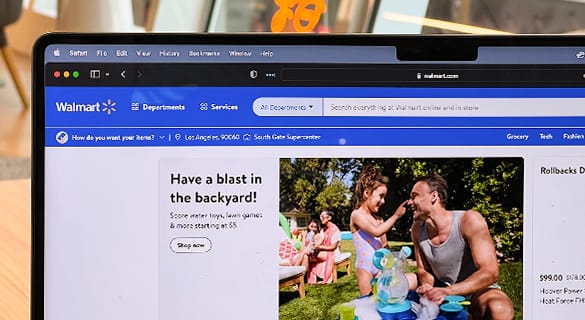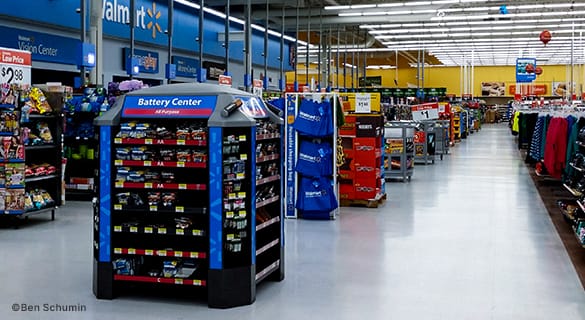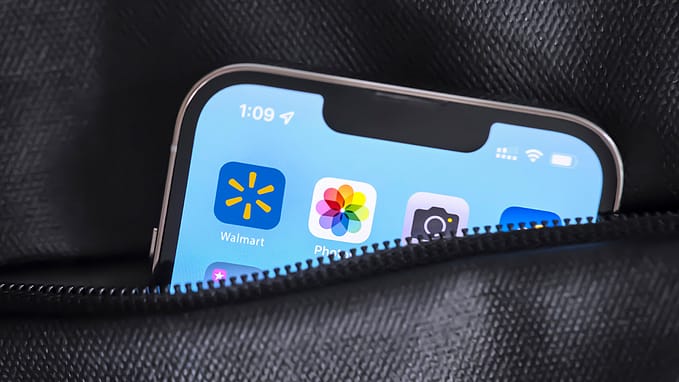Resources
Walmart and IoT: A Case Study

With tech, there is always going to be room for improvement. The same limitations that affected your app a while back aren’t going to be there forever, and realising when, and how, to change and adapt is one of the most important things you can learn well and learn early.
Technology doesn’t stop changing, adapting, or improving. There is always something more to work with: from personal websites, some companies have moved completely to apps, and from apps, have gone full-circle to websites. We’ve gone from requiring tools to control or change a piece of technology to being able to control hardware through apps or through voice.
And when these new technologies come around, companies will always find a way to use them to their benefit.
Walmart: A Case Study

Walmart’s one of the biggest retailers in the United States. That comes with some considerations to keep in mind when it comes to adapting technology to work on that scale, and when it comes to adopting technology in the first place.
Here’s how: a small or medium organization will have an endless quantity of data to sort through once the company starts monitoring and recording. It will have an inventorying system to work around. It’ll have some aspects of the business that can be automated so that it leaves human employees free to take on other work, a little bit like parking a robotic greeter in front of a restaurant.
When it comes to organizations that are bigger, that technology has to be able to keep up, and that technology becomes necessary. Today, even SMEs will find it difficult to work without using technology; multiply that by the size of Walmart, and it’s a harder challenge to take on with a much greater payoff.
Walmart has multiple physical locations. Walmart has an online component. Walmart has an app. Walmart has a supply chain.
All of these need to be operational, and all of them need to work together.
That’s where IoT comes in. And that’s what Walmart started implementing over the years.
It started by adopting RFID to track inventory.
Then it looked at what it could do with IoT.
Walmart and IoT

Have you ever noticed that every Walmart you go to feels the same? It’s never too hot or too cold; the ice-cream is always frozen; the drinks are kept cold?
Every Walmart feels the same because of IoT.
From the HVAC system to the refrigerators, Walmart monitors the state of its over 4,000 stores through the internet of things, and receives over 1.5 million messages a day, which are then forwarded to the appropriate teams. If a unit is underoperating, or there are problems in the cooling system, a message is relayed to the repair team in order to start taking proactive steps during maintenance repairs.
This means they save money: the unit isn’t pushed to breaking point, and Walmart doesn’t field complaints from customers or deal with returns because the product has been affected.
Similarly, the way the store feels. Monitoring the HVAC system and managing energy consumption is a big task for one manager in one store, and when you add up all the other tasks that a manager has to do in-store, it can become overwhelming – but Walmart has implemented an IoT system that monitors and adjusts according to the needs of that store, in particular. This helps them save money, again, by reducing bills without actually impacting the customer.
Think of your own house. If you have a light on in another room, it will still add to your electricity bill, but if the light goes off when no-one is there and comes on when someone enters, that’s a change that can help you in the long run.
When the pandemic shuttered all stores, Walmart could adapt on the fly: their stores suddenly had to work around the time it took to restock and sanitise, and the HVAC and refrigeration systems had to be set back to match this. Doing it manually would have taken hours; with IoT, it was a simultaneous procedure that fanned out across all the stores.
Walmart and AI

IoT isn’t the only technology that Walmart has introduced and uses frequently in their stores.
There’s also AI.
Its supply chain is built around AI, from analysing what will sell to getting a feel for what customers want to buy through analysing social media and searches. Furthermore, Walmart’s AI can supplement and substitute out of stock products, meaning that customers are never left wanting, and can opt for the next-best available item. As for their search, that’s also AI-enabled, with machine learning and natural language processing to help refine the way searches work.
Then there’s the AI-enabled fitting room: the ‘choose my model’ option allows consumers to try on clothes using a representative model across all shapes, sizes, and skin-tones. Shopping online for clothes is notoriously difficult, and this helps customers really look at what those clothes will do for their body, which means they’re more likely to take that final step and purchase.
Finally, Walmart has conversational AI that works to streamline the shopping experience even further. Missing a product, or want a particular product? Text or say what you need, and Walmart will add it to your shopping cart, ready for purchase.
Why does it work for Walmart?

A neat thing about technology is that it can make our lives better and easier, but only if we put in the effort to actually start with that. Walmart’s investment in AI and IoT has been built around making the lives of their consumers easier, and so that’s what happens: every new technology they’ve implemented is built around making their customers’ lives easier, which then makes it a lot easier to implement and to get the kind of benefits that other companies have to really work at.
Technology is a great asset for any business. But it needs to be used in a way that makes sense, both for the business and for the consumer. Walmart’s efforts in revolutionizing the way their company works has paid off: they’re a highly tech-enabled company whose technology helps the customer, which has resulted in repeated business.
